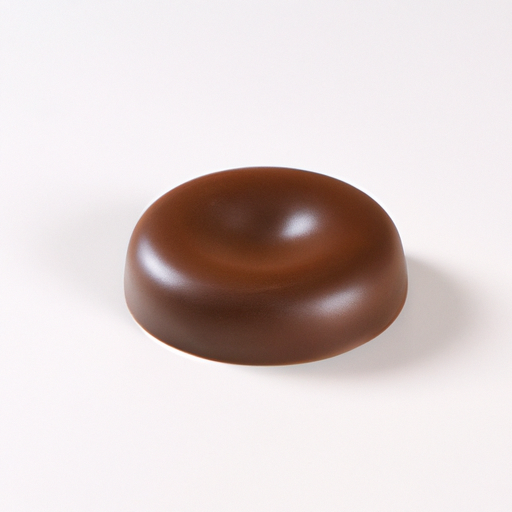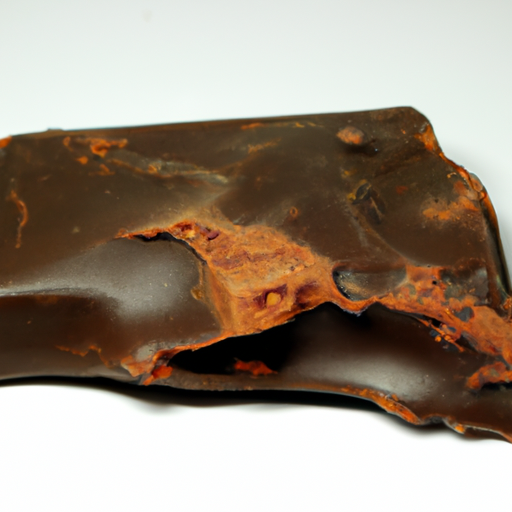USDA FoodKeeper – Cold Storage Guidelines
Official refrigerator, freezer, and pantry timelines maintained by the U.S. Department of Agriculture.
Visit USDA FoodKeeperRich and versatile, baking chocolate is the secret ingredient that elevates your desserts from ordinary to extraordinary. With a pantry life of up to a year, this decadent delight remains safe to use even 30 days past its expiration, making it a low-risk option for your sweet creations. Just store it properly, and you’ll always be ready to whip up something delicious!
30 most common foods with instant answers. Print it and stick it on your fridge—completely free! Want more? Upgrade to the complete guide with 70+ foods.


Pantry
15-21°C / 59-70°F (room temperature)
Store in a cool, dry place in an airtight container to prevent moisture absorption and odor transfer. Keep away from strong-smelling foods.
365 days
180 days
Baking chocolate may develop a white film (bloom) due to fat separation, but this does not indicate spoilage. If it has an off smell or unusual texture, discard it.
Baking chocolate can be used for making desserts, sauces, and even as a coating for fruits and nuts.
Unsweetened cocoa powder can be used as a substitute for baking chocolate, using 3 tablespoons of cocoa powder plus 1 tablespoon of fat for each ounce of baking chocolate.
The expiration date indicates the last date for peak quality. Baking chocolate may still be safe to use after this date if stored properly, but flavor and texture may decline.
To determine if baking chocolate has gone bad, check for any visible signs such as white streaks or a dull appearance, which indicate fat bloom or sugar bloom. Smell the chocolate; if it has a sour or off odor, it's best not to use it. Additionally, if the texture feels grainy or overly dry instead of smooth and firm, it's a sign that the chocolate has deteriorated.
Baking chocolate is generally safe to consume, but improper storage can lead to contamination. Always ensure hands and surfaces are clean when handling.
To extend freshness, consider vacuum sealing unused baking chocolate or storing it in a dark, cool place to minimize exposure to light and heat.
Baking chocolate is often used in traditional recipes around the world, from brownies in the U.S. to rich chocolate cakes in Europe.
Storing Baking Chocolate next to spices is generally safe, but it's best to avoid it. Spices can impart strong odors that may affect the chocolate's flavor. To maintain the best quality, keep your Baking Chocolate in a sealed container away from strong-smelling foods.
Once opened, Baking Chocolate can last up to 365 days in the pantry if stored properly. However, for optimal flavor and quality, it's best to use it within 6-12 months after opening. Always check for any signs of spoilage before use.
Yes, the type of container can significantly affect the shelf life of Baking Chocolate. An airtight container is ideal as it protects the chocolate from moisture and odors. If left in its original packaging, especially if it's paper or cardboard, the chocolate may absorb unwanted flavors and moisture more quickly.
Freezing Baking Chocolate can change its texture slightly, making it more brittle when thawed. To freeze it properly, wrap it tightly in plastic wrap and place it in an airtight container. When you're ready to use it, thaw it in the refrigerator to minimize condensation and maintain its quality.
Yes, it is generally safe to eat Baking Chocolate that has been at room temperature for 24 hours, as long as it shows no signs of spoilage. However, prolonged exposure to heat can affect its quality and texture. If it feels too warm or has a soft texture, it may be better to discard it.
To safely transport Baking Chocolate for 6 hours, keep it in an insulated cooler or a temperature-controlled bag to prevent melting. Use ice packs to maintain a cool environment, especially in warmer weather. Make sure the chocolate is well-wrapped to protect it from any moisture and potential damage.
Yes, Baking Chocolate typically lasts longer in winter than in summer due to temperature and humidity variations. In warmer months, higher temperatures can cause the chocolate to melt or become soft, which could affect its shelf life. Always store it in a cool, dry place regardless of the season.
While most brands of Baking Chocolate have a similar shelf life of up to 365 days, it's best to check the packaging for specific expiration dates. Some brands may use different preservatives or ingredients that could slightly alter their shelf life, so always follow the manufacturer's guidelines.
Leaving Baking Chocolate in a warm kitchen for a day may cause it to soften or melt, potentially ruining its texture for baking. However, if it hasn't melted, it is still safe to consume. Just be sure to let it cool down completely before using it again, and store it in a cooler environment afterward to maintain quality.
30 most common foods with instant answers. Print it and stick it on your fridge—completely free! Want more? Upgrade to the complete guide with 70+ foods.
Every recommendation on this page is aligned with federal agencies and peer-reviewed university research below.
Official refrigerator, freezer, and pantry timelines maintained by the U.S. Department of Agriculture.
Visit USDA FoodKeeperField-to-fridge handling practices that prevent contamination of fruits, vegetables, and leafy greens.
Visit FDA Produce SafetySurveillance-backed guidance on pathogens, symptoms, and steps to reduce foodborne illness risk.
Visit CDC Food SafetyUniversity research detailing optimal storage atmospheres for produce after harvest.
Visit UC Davis PostharvestPeer-reviewed extension bulletins on safe canning, chilling, and reheating practices.
Visit Penn State ExtensionNeed deeper reading? Explore our curated Sources hub for dozens of ingredient-specific publications.
Scan your food directly and get instant safety info using our AI-powered camera feature.
Cooking Ingredients
View expiration date and storage guide →
Beverages
View expiration date and storage guide →
Grains & Pasta
View expiration date and storage guide →
Instant Foods
View expiration date and storage guide →
Condiments & Spices
View expiration date and storage guide →
Fruits & Vegetables
View expiration date and storage guide →
Condiments & Spices
View expiration date and storage guide →
Canned & Jarred Goods
View expiration date and storage guide →
Grains & Pasta
View expiration date and storage guide →
Important: These are general guidelines based on authoritative sources listed above. Always use your best judgment and when in doubt, throw it out. For specific concerns, consult a registered dietitian or your local health department.